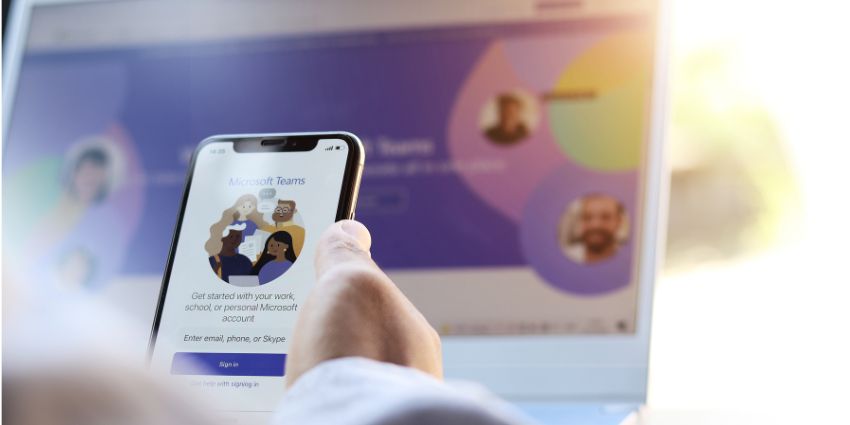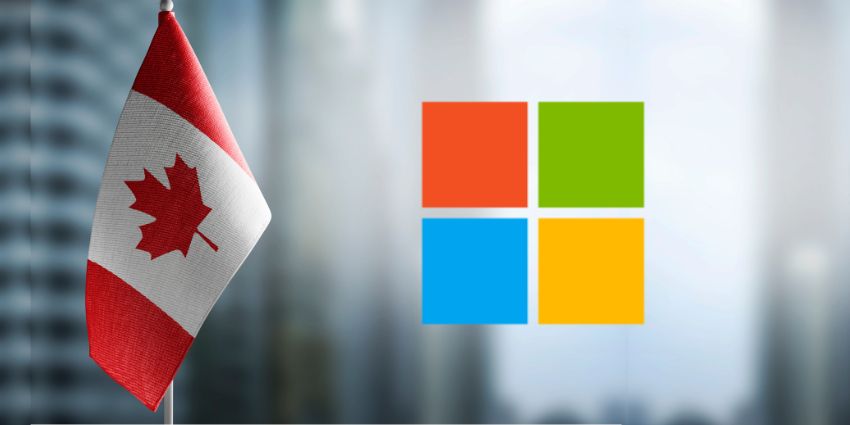In a business environment where AI is the prevailing focus for companies across the globe, having exposure to the “best” is one way businesses are looking to gain an edge over their AI-wielding opponents.
Yet, in such a race filled with numerous players and an ever-evolving repertoire of AI jargon, it can be hard for buyers to know which company to buy into.
Microsoft’s CEO Satya Nadella has made a claim that lays out its AI abilities and growth in no uncertain terms: Microsoft’s AI model performance is “doubling every 6 months.”
2/ We are riding multiple compounding S curves in pre-training, inference time, and systems design, driving model performance that is doubling every 6 months.
Azure is the infrastructure layer for AI, optimized across every layer: DCs, silicon, systems software, and models to…
— Satya Nadella (@satyanadella) April 30, 2025
This announcement came hot off the heels of Microsoft’s fourth quarter earnings report, which saw it have one of its best post-earnings days in a decade.
The results were impressive, and although they can be attributed to a number of reasons, chief among them was investors’ belief that Microsoft’s AI investment is now paying off.
So, with Microsoft’s AI models constantly gaining new power, should AI-conscious customers switch their UC solution to Teams so they can get access to the best AI on offer?
Copilot Examined
Copilot is Microsoft’s AI tool that is natively integrated into Microsoft Teams.
Although subject to updates, it is most commonly used for providing transcriptions, making summaries, generating copy and images, and increasingly, automating processes.
Microsoft Copilot began with the launch of GitHub Copilot in June 2021, a collaboration between Microsoft and OpenAI that brought AI-powered code suggestions to developers.
In February 2023, Microsoft introduced Bing Chat, a chatbot based on GPT-4, which later evolved into Microsoft Copilot and replaced the Cortana virtual assistant.
The Copilot brand unified Microsoft’s AI offerings in November 2023, consolidating Bing Chat, Microsoft 365 Copilot, and Windows Copilot under a single name.
Copilot for Microsoft 365 officially launched for enterprise users on November 1, 2023.
After OpenAI exploded onto the scene and thrust the concept of generative AI into the public imagination, Microsoft became one of the startup’s chief investors.
As a result, Copilot’s AI capabilities are built on large language models from OpenAI, primarily its GPT-4 and GPT-4 Turbo, enabling it to generate text, summarize content, automate tasks, answer questions, and create images using DALL-E.
Copilot can also automate workflows, assist with coding, and perform conversational search.
However, all these and other capabilities did not come at once.
In spring 2024, Microsoft integrated GPT-4o into Copilot and also added new agents (Researcher, Analyst), smarter AI with memory and reasoning, and a new Create hub for content generation.
That autumn, Copilot Wave 2 brought GPT-4o to all versions, improved DALL-E 3 image generation, Copilot Pages, and Copilot agents for more automation and workflow support.
By 2025, Copilot Studio gained generative actions and event-triggered automation.
Mobile apps allowed editing and sharing Copilot Pages, and it later received dynamic document snapshots, audio overviews, expanded Copilot Pages, multilingual Teams support, and new reasoning agents like Project Manager in Planner.
These updates show Copilot’s rapid evolution, with a focus on advanced AI, deeper integration, and new agent-based automation across Microsoft’s ecosystem.
Equally, Nadella’s statement on six months is at least largely accurate in terms of some major updates.
Therefore, are we just a few more months away from the next big update?
Should you Keep a Level Head on Copilot?
Despite the possibility for rapid growth of your AI investment, should you switch to Teams and get access to Copilot, the jury is still out on whether Microsoft actually has the best AI capabilities.
When compared to other leading UC AI copilots, such as Zoom AI Companion and Webex Assistant, some differences emerge.
Zoom’s AI Companion has received strong marks for its transcription accuracy and meeting summary quality.
In fact, recent assessments showed that Zoom’s solution produces fewer errors in transcriptions and generates more accurate summaries than Teams Copilot.
This makes Zoom a compelling choice for organizations where precise meeting records are critical.
Even last year, a report revealed Microsoft’s troubles with its Copilot AI, with insiders, including a senior executive, calling the tools “gimmicky.”
Microsoft does have the advantage of its close relationship with OpenAI, however.
If the word on everyone’s tongue in 2024 was generative AI, in 2025 it’s Agentic AI.
As OpenAI’s CEO Sam Altman put it, 2025 is the year AI agents enter the workforce.
Agentic AI is the next, autonomous form of AI, where users can give AI a goal and the AI can go about completing it unprompted.
With OpenAI being one of the major AI players, it is making a major push to develop agentic AI first.
To support this vision, OpenAI has released new tools such as a dedicated API and an open-source Agents SDK, designed to help developers build, monitor, and optimize AI agents that can interact with multiple systems and execute workflows autonomously.
These tools are intended to bridge the gap between impressive AI demos and real-world, production-ready agentic applications.
However, Microsoft’s relationship with OpenAI is going through turbulence.
At the beginning of the year, OpenAI unveiled its $500 billion Stargate project designed to facilitate the construction of data centers across the US, raising questions about the future of Microsoft’s multi-billion-dollar partnership with OpenAI.
Salesforce CEO Marc Benioff predicted that Microsoft won’t use OpenAI’s technology in the future.
Equally, Microsoft recently lost its exclusive cloud provider status for OpenAI, although it retains the “right of first refusal,” making it the first option to host OpenAI workloads in its cloud infrastructure and services.
Can Microsoft Deliver Sustained Growth for Copilot?
Despite the uncertainty of Microsoft’s AI partnerships, Nadella highlights how the expansion and growth of their AI model has been thanks to pre-training, inference, and system design.
Therefore, it is safe to say that some of this growth is literally built in and not as subject to external factors.
However, with the race between providers currently neck and neck, Microsoft may have to wait for a few more of these “doublings” before they can bring tangible new features that clearly set its Copilot apart from the rest.
Does news that Microsoft’s AI abilities are ‘doubling’ every six months make Teams a more attractive option?
byu/Kris_The_UC_Scribe inuctoday







